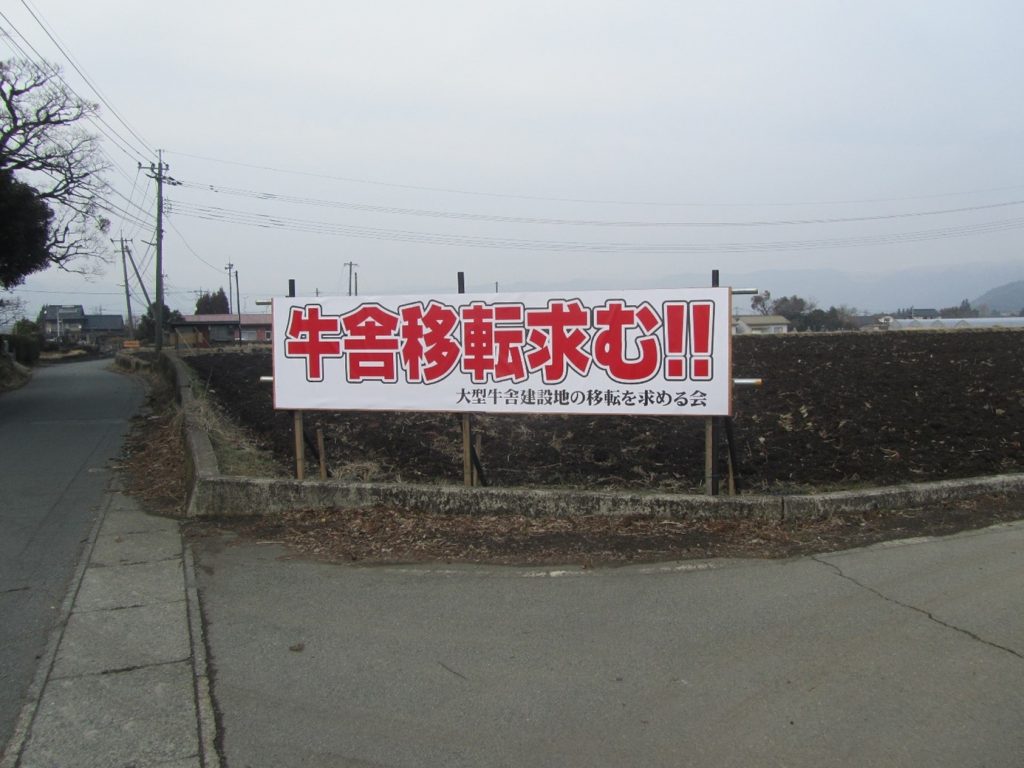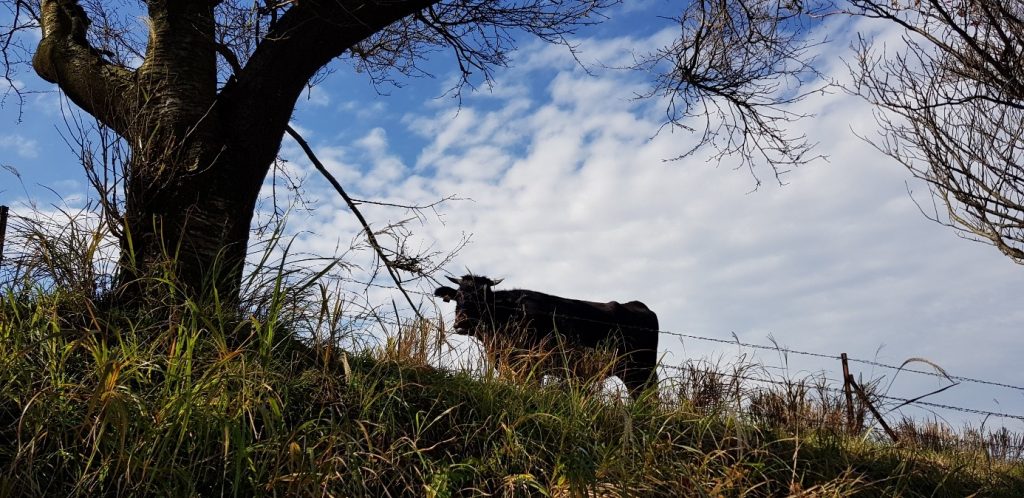by Sebastian Polak-Rottmann
I visited the Aso region in Kumamoto Prefecture several times between 2018 and 2020 to conduct research for my PhD project. I talked to local people who engage in local activities about their views on happiness. Here, I will concentrate on different patterns of participation that I encountered during my research. I observed several ways in which people try to influence their local communities. Most people emphasised that they like to make others happy or share the local natural landscape with others and therefore collectively make significant effort to preserve it. However, when arriving in Aso for the first time in 2018, I came across an exceptional case of local activism aimed at preserving the local scenery. A local livestock farmer decided to build a cattle barn close to a train station in Aso-city. While regional organisations and the regional administration initially supported the project financially, local inhabitants opposed the location of the facility, as they feared a deterioration of the hamlet’s quality of life. I met two representatives of the so-called Movement for the Relocation of the Construction Site of the Big Cattle Barn (Ōgata gyūsha kensetsuchi no iten o motomeru kai) that used a number of strategies of political participation to channel residents’ voices. The movement consisted of a number of local people and former bureaucrats who collected signatures from about 8,000 people for a petition, contacted local as well as prefectural politicians, and even organised a demonstration on a cold winter’s day [1].

Copyright © Sebastian Polak-Rottmann 2018
The demonstration was a quite unusual event for the rural Aso region where many people usually use informal ways to influence local politics, as Mariko, a woman in her 60s emphasises: “I usually go directly to the mayor, if I have a proposal. The mayor went to the same school as my brother, so I just go to him and say: ‘This is what I want to do’. He even visited us once and I think he recognises my face by now and so things will be easier next time”. Protesting against a cattle barn is also a controversial matter in another sense: Aso is famous for its akaushi-beef, which is served in a number of restaurants for tourists around the whole region. Cows are an integral part of the distinctive grassland (sōgen) of the Aso caldera and some of the farmers engage in the local grassland associations (bokuya kumiai) and the traditional burning of the grass (noyaki) in February and March.

Copyright © Sebastian Polak-Rottmann 2018
Due to the importance of livestock farming in Aso, the protest challenging the local farming industry needed to be done in a careful manner: The name of the movement emphasises that the protesters do not oppose the construction of a cattle barn per se but rather wish for another site for the building. It is not surprising that those, who criticise the whole funding and construction process in a more encompassing way, soon left the movement, which did not seek open confrontation with local policy makers. In the end, the cattle barn was built and the movement did not reach its goal of relocating the barn. Also, the municipality that – due to pressure from civil society – tried to withdraw the financial aid for its construction ultimately had to pay compensation to the facility’s owner.
This example shows that people link their activities to their local community and that some forms of political participation are more acceptable and feasible than others. The protest for the relocation of the cattle barn is a rather exceptional case, as it is elite-challenging in its nature. One of my research participants illustrated the otherwise cooperative mode of participation dominant in the region: “When I think, that something good should be done, I’ll do it with my friends (nakama). Then, little by little, the scope will increase. We are not doing an opposition movement (hantai undō), that’s not what I imagine [as shimin undō]”.
Political participation in rural Aso takes place in the context of local decision-making processes that are linked to dominant perceptions of what “Aso” should be like. Oppositional movements are rare and are not viewed as an option of political participation by many of my respondents. Nevertheless, the municipalities are vibrant and show numerous small changes often taking place in the informal everyday lives of the local community. Subjective goals and ideas have to be carefully adjusted to the dominant power structures in rural Japan, sometimes making expressive activities hard to perform, as the example of the movement for the relocation of the cattle barn suggests.
Sebastian Polak-Rottmann is a PhD candidate at the Department of East Asian Studies at the University of Vienna. He is part of an interdisciplinary research project funded by the Austrian Academy of Sciences on subjective well-being and social capital in rural Japan. For his dissertation, he conducted semi-structured interviews in the Aso region to understand the relationship of political participation and subjective well-being.
References
[1]
Gotō, Tazuko. 2017. ‘Gyūsha kensetsuchi ‚iten o‘, Aso-shi ni jūmin ga seigansho, shomeibo, kankeisha no taiō kamiawazu, Kumamoto-ken’. In Asahi Shinbun, 16.12.2017: 28.
